- About
- News
- Faculty
-
Academics
- School of Physical Science and Technology (SPST)
- School of Life Science and Technology (SLST)
- School of Information Science and Technology (SIST)
- School of Entrepreneurship and Management (SEM)
- School of Creativity and Art (SCA)
- Institute of Humanities (IH)
- School of Biomedical Engineering (BME)
- Shanghai Institute for Advanced Immunochemical Studies (SIAIS)
- iHuman Institute
- Institute of Mathematical Sciences (IMS)
- Center for Transformative Science (CTS)
- Institute of Carbon Neutrality (ICN)
- Shanghai Clinical Research and Trial Center
- Tech Transfer
- Global
- Campus Life
-
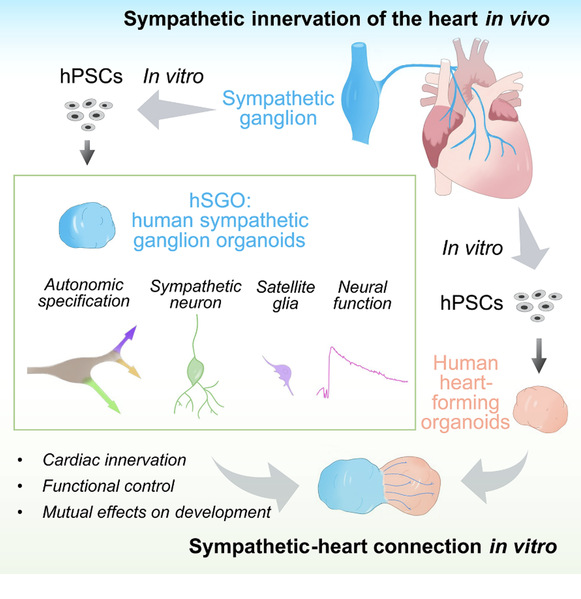 On December 12, Assistant Professor Xiang Yangfei’s lab at the School of Life Science and Technology (SLST) published a paper entitled “Human PSC-derived organoids model sympathetic ganglion development and its functional crosstalk with the heart” in the journal Cell Stem Cell. For the first time, this study reports the successful generation of human sympathetic ganglion organoids (hSGOs) from ...
On December 12, Assistant Professor Xiang Yangfei’s lab at the School of Life Science and Technology (SLST) published a paper entitled “Human PSC-derived organoids model sympathetic ganglion development and its functional crosstalk with the heart” in the journal Cell Stem Cell. For the first time, this study reports the successful generation of human sympathetic ganglion organoids (hSGOs) from ... -
 Recently, a research team led by Professor Xu Wenqing from the School of Life Science and Technology (SLST) at ShanghaiTech, in collaboration with other researchers, published a significant study in the journal Proceedings of the National Academy of Sciences (PNAS). The paper, titled “De novo design of protein binders to stabilize monomeric TDP-43 and inhibit its pathological aggre...
Recently, a research team led by Professor Xu Wenqing from the School of Life Science and Technology (SLST) at ShanghaiTech, in collaboration with other researchers, published a significant study in the journal Proceedings of the National Academy of Sciences (PNAS). The paper, titled “De novo design of protein binders to stabilize monomeric TDP-43 and inhibit its pathological aggre... -
 Translated and edited from the article originally reported by China Science Daily.Recalling the story about her university time when she asked to skip a required English course so she could listen to a signal processing course offered by the computer science department, Bai Fang—now an associate professor at the School of Life Science and Technology and assistant director of the Shanghai Inst...
Translated and edited from the article originally reported by China Science Daily.Recalling the story about her university time when she asked to skip a required English course so she could listen to a signal processing course offered by the computer science department, Bai Fang—now an associate professor at the School of Life Science and Technology and assistant director of the Shanghai Inst... -
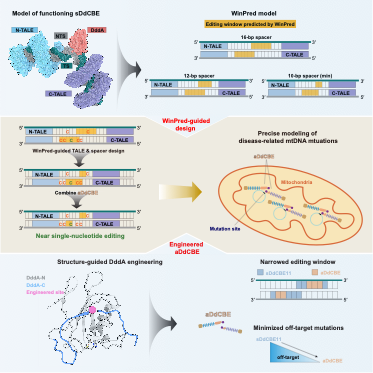 A research team led by Assistant Professor Yang Bei at the School of Life Science and Technology (SLST) and Shanghai Institute for Advanced Immunochemical Studies (SIAIS) and Professor Chen Jia at SLST, ShanghaiTech University, has achieved a significantprogress in mitochondrial DNA (mtDNA) editing. Their study, published in Molecular Cell, revealed the first structural snapshots of...
A research team led by Assistant Professor Yang Bei at the School of Life Science and Technology (SLST) and Shanghai Institute for Advanced Immunochemical Studies (SIAIS) and Professor Chen Jia at SLST, ShanghaiTech University, has achieved a significantprogress in mitochondrial DNA (mtDNA) editing. Their study, published in Molecular Cell, revealed the first structural snapshots of... -
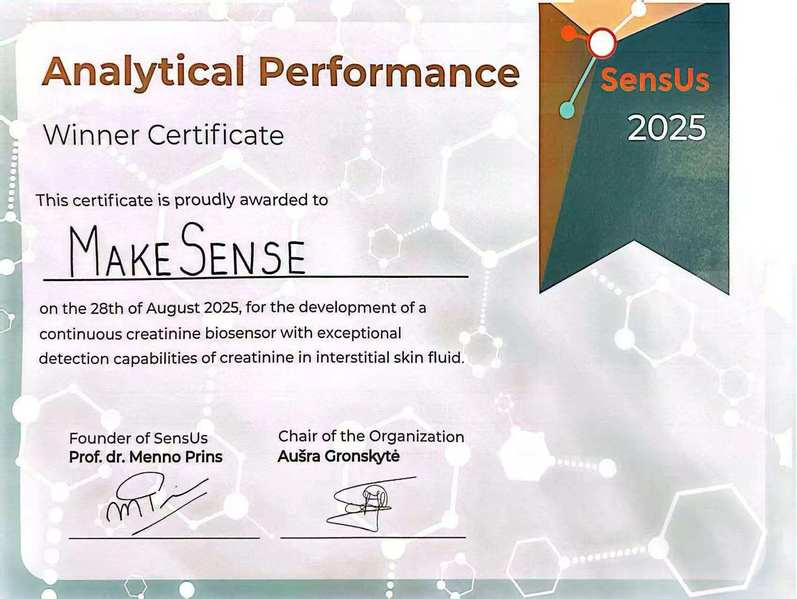 At the SensUs 2025 Competition held in Eindhoven, the Netherlands, at the end of August, the MakeSense team from ShanghaiTech, in its first-ever participation, delivered a stunning performance. Competing against top-tier global teams, MakeSense clinched the Analytical Performance Award (Global Champion) and the Innovation Award (Global Runner-Up), while also earning the SensUs Gold Medal...
At the SensUs 2025 Competition held in Eindhoven, the Netherlands, at the end of August, the MakeSense team from ShanghaiTech, in its first-ever participation, delivered a stunning performance. Competing against top-tier global teams, MakeSense clinched the Analytical Performance Award (Global Champion) and the Innovation Award (Global Runner-Up), while also earning the SensUs Gold Medal... -
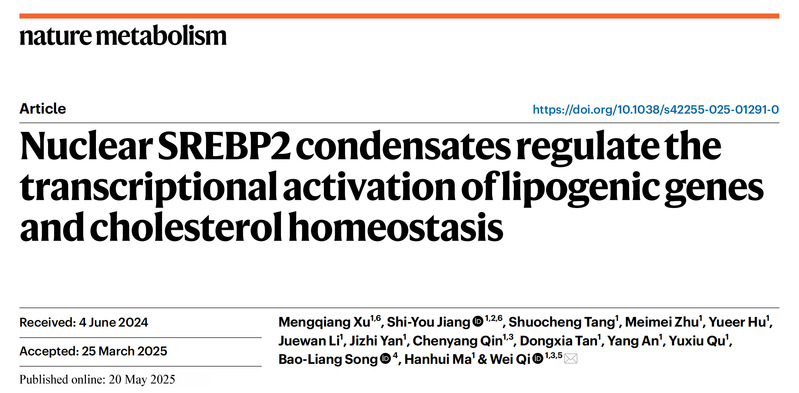 High cholesterol is a major risk factor for atherosclerosis, heart disease, and stroke. According to the World Health Organization (WHO), over 4.4 million people die annually from cardiovascular diseases linked to high cholesterol, posing a significant public health challenge. Understanding how the body regulates cholesterol levels is crucial for disease prevention and drug development. Sterol Reg...
High cholesterol is a major risk factor for atherosclerosis, heart disease, and stroke. According to the World Health Organization (WHO), over 4.4 million people die annually from cardiovascular diseases linked to high cholesterol, posing a significant public health challenge. Understanding how the body regulates cholesterol levels is crucial for disease prevention and drug development. Sterol Reg... -
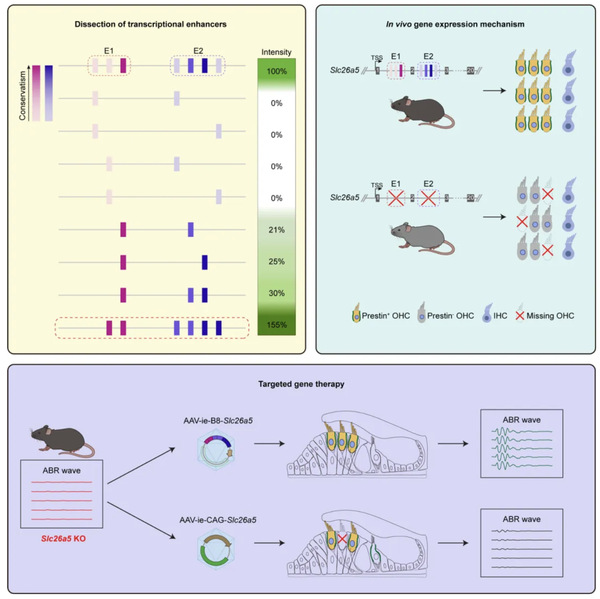 Imagine a world where a child born deaf can hear their parents’ voices for the first time. This vision is closer to reality thanks to a groundbreaking discovery by researchers at iHuman Institute, ShanghaiTech University. Led by Associate Professor Zhong Guisheng, the team has developed a technology called ARBITER (AAV Reporter-Based in vivo Transcriptional Enhancer Reconstruction), which ha...
Imagine a world where a child born deaf can hear their parents’ voices for the first time. This vision is closer to reality thanks to a groundbreaking discovery by researchers at iHuman Institute, ShanghaiTech University. Led by Associate Professor Zhong Guisheng, the team has developed a technology called ARBITER (AAV Reporter-Based in vivo Transcriptional Enhancer Reconstruction), which ha... -
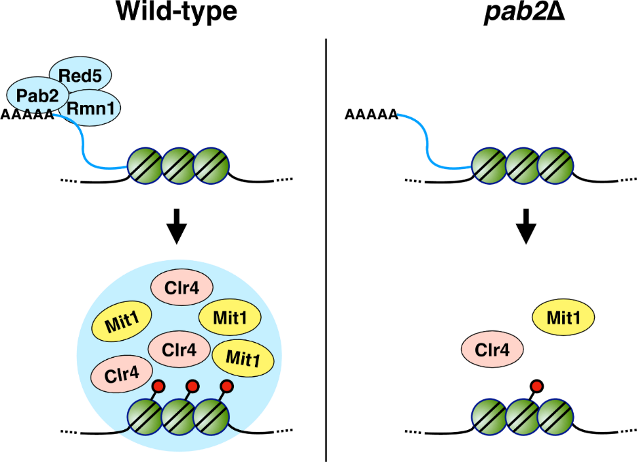 Heterochromatin is a tightly packed form of DNA essential for maintaining genome stability, regulating gene expression, and ensuring proper chromosome segregation during cell division. Despite its importance, the molecular mechanisms underlying heterochromatin formation remain incompletely understood. In eukaryotic cells, heterochromatin is marked by specific histone modifications, such as methyla...
Heterochromatin is a tightly packed form of DNA essential for maintaining genome stability, regulating gene expression, and ensuring proper chromosome segregation during cell division. Despite its importance, the molecular mechanisms underlying heterochromatin formation remain incompletely understood. In eukaryotic cells, heterochromatin is marked by specific histone modifications, such as methyla... -
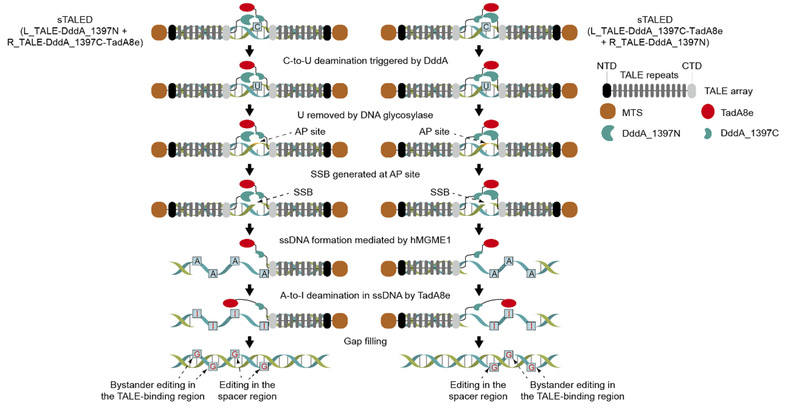 Mitochondria, the “powerhouses” of cells, play a vital role in adenosine triphosphate (ATP) production. Mitochondria possess their own independent DNA, termed mitochondrial DNA (mtDNA), which encodes genes essential for mitochondrial function. Compared to nuclear DNA, mtDNA is more prone to mutations due to reactive oxygen species generated during oxidative phosphorylation. Most mtDNA mutations ...
Mitochondria, the “powerhouses” of cells, play a vital role in adenosine triphosphate (ATP) production. Mitochondria possess their own independent DNA, termed mitochondrial DNA (mtDNA), which encodes genes essential for mitochondrial function. Compared to nuclear DNA, mtDNA is more prone to mutations due to reactive oxygen species generated during oxidative phosphorylation. Most mtDNA mutations ... -
 The development of programmable, site-specific gene editing tools has provided methods and strategies for correcting pathogenic mutations, such as emerging RNA editing technologies. Unlike DNA editing, RNA editing transiently modifies RNA transcripts, thereby avoiding the long-term safety risks associated with DNA off-target effects.Two adenosine deaminase ADAR (adenosine deaminase acting on RNA)-...
The development of programmable, site-specific gene editing tools has provided methods and strategies for correcting pathogenic mutations, such as emerging RNA editing technologies. Unlike DNA editing, RNA editing transiently modifies RNA transcripts, thereby avoiding the long-term safety risks associated with DNA off-target effects.Two adenosine deaminase ADAR (adenosine deaminase acting on RNA)-... -
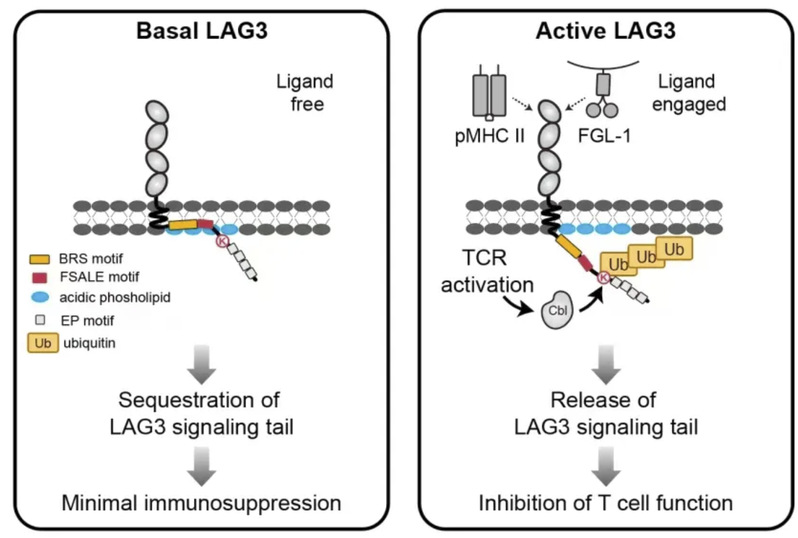 A new study published in Cell has uncovered how a molecule called LAG3 functions as a brake to suppress the immune system. This discovery helps explain how cancer avoids immune attacks and may guide doctors to better treatment options. Led by Associate Professor Wang Haopeng from the School of Life Science and Technology (SLST) at ShanghaiTech University, this research offers a fres...
A new study published in Cell has uncovered how a molecule called LAG3 functions as a brake to suppress the immune system. This discovery helps explain how cancer avoids immune attacks and may guide doctors to better treatment options. Led by Associate Professor Wang Haopeng from the School of Life Science and Technology (SLST) at ShanghaiTech University, this research offers a fres... -
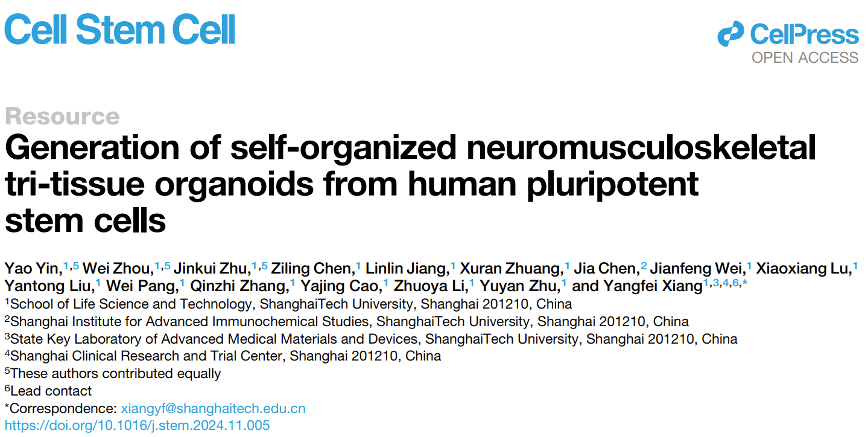 An organoid is a miniaturized and simplified model of an organ created in vitro, designed to replicate the functional, structural, and biological complexity of that organ. In recent years, organoids have been widely used to study human tissues and organs. In general, the maturation of tissues and organs, as well as the normal functioning of the human body, depends on the crosstalk among different ...
An organoid is a miniaturized and simplified model of an organ created in vitro, designed to replicate the functional, structural, and biological complexity of that organ. In recent years, organoids have been widely used to study human tissues and organs. In general, the maturation of tissues and organs, as well as the normal functioning of the human body, depends on the crosstalk among different ... -
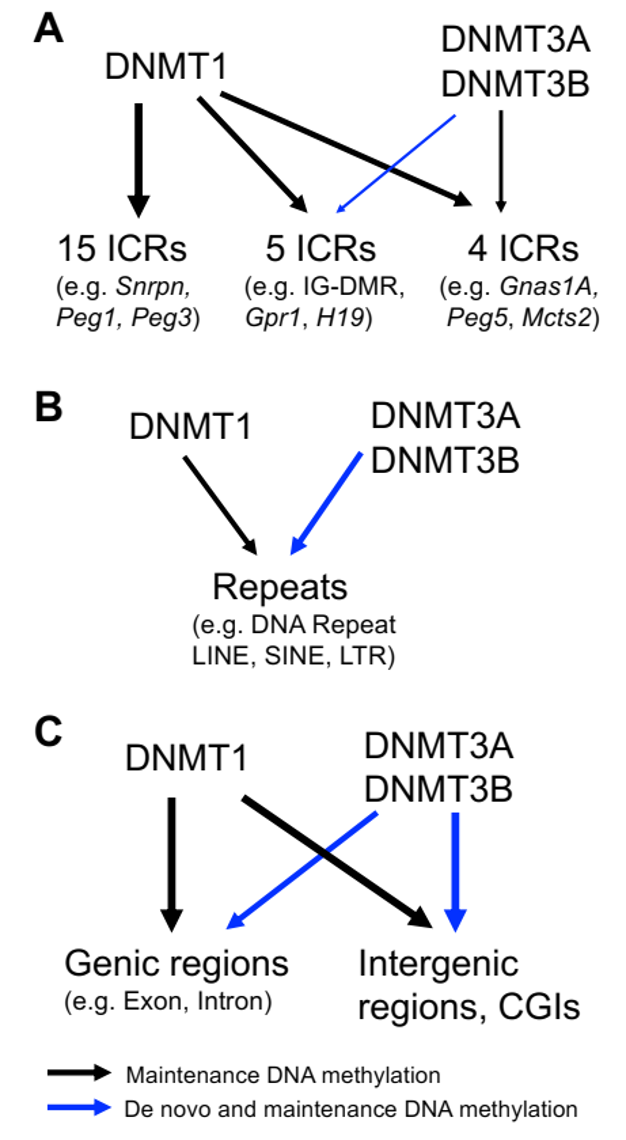 On November 12, 2024, Associate Professor Li Xiajun’s laboratory in the School of Life Science and Technology in ShanghaiTech University published a new study to further elucidate de novo and maintenance DNA methylation by DNA methyltransferases (DNMTs) in post-implantation embryos. This research was published in a paper titled “Regulation of de novo and maintenance DNA methylation by DNA ...
On November 12, 2024, Associate Professor Li Xiajun’s laboratory in the School of Life Science and Technology in ShanghaiTech University published a new study to further elucidate de novo and maintenance DNA methylation by DNA methyltransferases (DNMTs) in post-implantation embryos. This research was published in a paper titled “Regulation of de novo and maintenance DNA methylation by DNA ... -
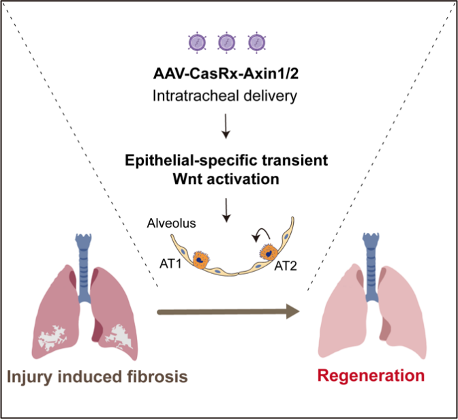 Pulmonary fibrosis is a chronic progressive disease and a common end-stage pathological manifestation of various chronic lung conditions, with idiopathic pulmonary fibrosis (IPF) being the most prevalent. The onset of IPF is characterized by repeated epithelial cell damage, leading to impaired epithelial regeneration and activation of lung fibroblasts into myofibroblasts. This process results in e...
Pulmonary fibrosis is a chronic progressive disease and a common end-stage pathological manifestation of various chronic lung conditions, with idiopathic pulmonary fibrosis (IPF) being the most prevalent. The onset of IPF is characterized by repeated epithelial cell damage, leading to impaired epithelial regeneration and activation of lung fibroblasts into myofibroblasts. This process results in e...
- per page 14 records total 113 records
- firstpage <<previouspage nextpage>> endpage
- PageNumber 1/9 jumpto

